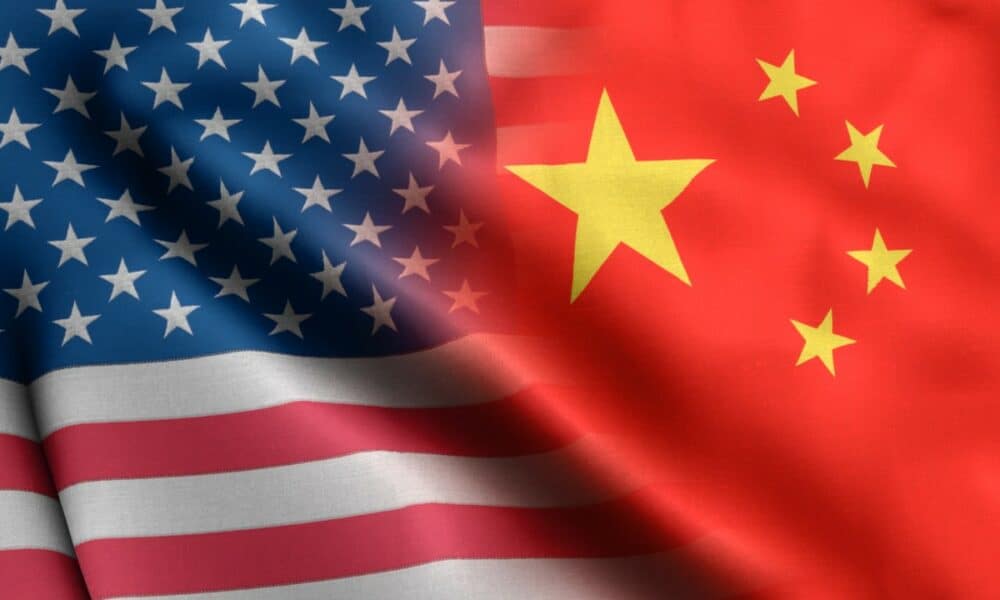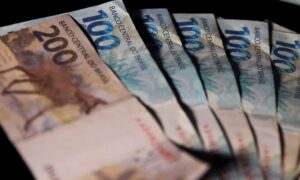New York saw a rollercoaster day in the financial markets on Tuesday, April 8. US stocks, which opened with a sharp rally fueled by cheap valuations and hopes of trade negotiations, lost steam as the White House confirmed a dramatic escalation in tariffs against China. Press Secretary Karoline Leavitt announced that, starting at midnight on Wednesday, all Chinese imports will face an additional 84% tariff, pushing the total to at least 104%. The news blindsided investors, reversing morning optimism and reigniting fears of a full-blown trade war. The Dow Jones, which surged 375 points or 1% early on, ended with modest gains, while the S&P 500 and Nasdaq, after peaking at 4% and 4.5%, closed up just 0.6% and 0.5%, respectively.
The past few days have been brutal for markets, with steep declines driven by Donald Trump’s protectionist policies. After three straight sessions of losses, Wall Street was desperate for a breather, and investors pounced on historically low valuations to snap up stocks. The S&P 500, for instance, closed Monday with a price-to-earnings ratio below 17, a bargain by historical standards. This lured buyers hunting for deals, but the confirmation of sky-high tariffs on China brought back uncertainty, capping the recovery.
Volatility ruled the day as markets tried to find their footing. Hopes of trade talks with allies like Japan and South Korea sparked the initial rally. Yet the White House’s hardline stance against Beijing shifted sentiment. Thomas Martin, a senior portfolio manager at Globalt Investments, noted that risks remain high. “We’re not out of the woods yet, and this cools things off,” he said, capturing the cautious mood that gripped Wall Street as the day wore on.
Immediate fallout from 104% tariffs
Raising tariffs on China to 104% marks one of Trump’s boldest moves since returning to the White House. The policy builds on the 10% blanket tariffs imposed last Saturday on nearly all US imports but takes aim at Beijing with a surcharge that more than doubles the cost of Chinese goods entering the American market. The administration’s goal is straightforward: shrink the trade deficit and shield domestic industry. However, experts warn the fallout could devastate both the US and global economies.
American companies reliant on Chinese imports, such as retailers and tech manufacturers, now face sharply higher costs. Apple, which lost $500 million in market value over the past two days, is among the hardest hit. Other tech giants like Nvidia and Microsoft also felt the sting, with significant share drops this week. Rising production costs are likely to trickle down to consumers, potentially stoking inflation at a time when the Federal Reserve is already struggling to tame it.
Across the Pacific, China fired back with resolve. The country’s Commerce Ministry vowed to “fight to the end” against US tariffs, pledging to uphold its own 34% retaliatory duties announced last Friday. Beijing also rolled out additional measures, including curbs on rare earth exports—key minerals for the tech industry—and sanctions on US defense firms. The escalating standoff is turning into a high-stakes showdown, with neither side showing signs of backing down.
Markets cling to hope of trade talks
Despite the jolt from the tariff announcement, global markets showed resilience on Tuesday. In Asia, most indices closed higher, with Japan’s Nikkei 225 jumping 6% and Hong Kong’s Hang Seng up 1.5%. In Europe, the STOXX 600 rose 2.72%, while London’s FTSE 100 and Germany’s DAX gained 2.71% and 2.48%, respectively. These upticks reflect optimism that Trump might soften his stance or strike deals with allies, blunting the impact of reciprocal tariffs set to kick in Wednesday.
In the US, investors are watching for any hint of détente. Kevin Hassett, director of the National Economic Council, said on Fox News that the administration is fielding “a large number of negotiation requests” from other nations. He emphasized that Japan and South Korea are top priorities, with Trump confirming a positive call with South Korea’s acting president Han Duck-soo. On Monday, Japanese Prime Minister Shigeru Ishiba spoke with Trump, dispatching a team to Washington to hammer out a trade deal.
The prospect of talks offered temporary relief. The VIX, Wall Street’s “fear gauge,” dropped 13% after hitting record highs in recent sessions. Still, traders remain on edge. “Investors are scouring for any sign of a trade deal,” said Jamie Cox, managing director at Harris Financial Group. “The market’s primed for a sharp rally, but it hinges on real news.”
- Flickers of optimism: The VIX decline signals easing immediate jitters among traders.
- Allied focus: Talks with Japan and South Korea could lead to tariff exemptions.
- Bargain hunting: Cheap stocks keep drawing risk-tolerant buyers.
Why the wild market swings?
Tuesday’s volatility is par for the course in times of economic uncertainty. After three days of steep drops, investors seized the week’s start to scoop up oversold stocks. Keith Lerner of Truist explained that such rebounds are typical post-shock. “Historically, rallies cluster with massive declines, especially when there’s fear of missing out,” he said. The FOMO-driven buying spurs rapid upticks during brief stabilization windows.
A clear example played out Monday when a false report of a 90-day tariff pause sent indices soaring briefly. Though the White House debunked the rumor, it highlighted how jittery markets are to any news. Michael Block of Third Seven Capital noted that traders are “ready for the fire”—meaning they’re poised for concrete developments to fuel a sustained rally.
The S&P 500’s low price-to-earnings ratio also spurred buying. Closing below 17 on Monday, it offered a rare chance for investors betting on a long-term rebound. But the 104% China tariff news injected a reality check, tempering gains and keeping markets on high alert.
Leavitt: There will be 104% tariffs going into effect tonight on China at midnight. pic.twitter.com/TiHUnITUkx
— Acyn (@Acyn) April 8, 2025
Looming threat of a global trade war
Trump’s tariff strategy extends beyond China. Last Saturday’s 10% tariffs hit nearly all US imports, rattling markets. Now, with reciprocal tariffs slated for Wednesday, dozens of countries face rates up to 50%, depending on their trade imbalances with the US. China, though, is the primary target, with the additional 84% surcharge pushing its total to 104%—an unprecedented level in modern trade history.
China’s response was swift and firm. Beyond its 34% duties on US goods, Beijing imposed rare earth export limits, an antidumping probe into American medical equipment, and a ban on poultry imports from two US firms. These steps signal China’s readiness for a drawn-out fight, even at a steep cost to its slowing economy.
The clash between the world’s two largest economies is dubbed a “high-stakes game of chicken.” Trump gave China until Tuesday midnight to drop its retaliatory tariffs, but Beijing stood its ground. Its refusal to budge reflects a belief that yielding to US demands would be an unacceptable surrender. Meanwhile, the US presses for concessions like selling TikTok to an American firm and ceding Panama Canal port control—demands China flatly rejected.
Ripple effects in the US and beyond
The 104% tariffs will hit US consumers and businesses hard. Goods like electronics, clothing, and toys, heavily sourced from China, are set to get pricier. Major retailers like Walmart and Target have warned that cost hikes will reach customers, adding pressure to inflation already above the Fed’s 2% target as of Monday. Analysts expect the tariffs to worsen this trend.
For companies, the outlook is grim. Apple, reliant on China for much of its supply chain, shed billions in market value this week. Nike and Tesla also took hits, with shares down 9% and 5%, respectively. Uncertainty prompted automakers like Ford and GM to seek exemptions for imported parts, though the administration has yet to budge.
Globally, the fallout is spreading. The European Union offered to buy more US liquefied natural gas to offset its trade deficit, hoping to dodge higher tariffs. Japan’s Shigeru Ishiba stressed his country’s role as the top foreign direct investor in the US, pushing for balanced trade ties. Emerging markets like Brazil, meanwhile, worry about losing US market share under the 10% tariffs already in place.
- Price hikes: Electronics and consumer goods will cost more in the US.
- Inflation pressure: Tariffs could push inflation beyond current levels.
- Global talks: Allies scramble for deals to sidestep surcharges.
Wall Street’s dire warnings
Investment banks like Goldman Sachs and JPMorgan Chase issued stark forecasts. Goldman raised the odds of a US recession in the next 12 months to 45%, while JPMorgan warned that a trade war escalation could tank global growth this year. JPMorgan CEO Jamie Dimon slammed the tariffs in his annual shareholder letter, arguing they’ll raise prices, slow the global economy, and erode US alliances.
That gloom clashes with optimism from some Trump aides. Trade adviser Peter Navarro claimed on Fox News that the market “is bottoming out now” and predicted a Dow at 50,000 with no recession. “S&P 500 firms will lead the recovery by producing here,” he said. Yet even Trump allies like Elon Musk and Bill Ackman have called the tariffs flawed, warning of severe downsides.
Market data paints a mixed picture. The S&P 500 dropped 9% last week, and the Nasdaq fell 10%, wiping out $6 trillion in market value in two days. Apple led tech losses, but the “Magnificent Seven”—Alphabet, Amazon, Apple, Meta, Microsoft, Nvidia, and Tesla—shed $1.8 trillion since the tariff surge began. Tuesday’s gains, though, hint at lingering hopes for a rebound if trade tensions ease.
Trump’s tariff timeline
Trump’s tariffs have unfolded rapidly, shaking markets at every step. Here’s the key sequence:
- Saturday, April 5: 10% tariffs take effect on nearly all US imports.
- Friday, April 4: China sets 34% retaliatory tariffs on US goods, effective April 10.
- Tuesday, April 8: White House confirms 104% tariffs on China, starting Wednesday midnight.
- Wednesday, April 9: Reciprocal tariffs up to 50% hit other countries.
This brisk rollout leaves little room for affected firms and governments to adapt or negotiate.
Global markets react
While Wall Street wavered, Asian markets staged a notable rebound Tuesday. Japan’s Nikkei 225 soared 6%, buoyed by trade deal hopes with the US. Hong Kong’s Hang Seng rose 1.5%, clawing back some of Monday’s 13% plunge—the worst daily drop since 1997. South Korea’s Kospi edged up 0.3%, and Australia’s ASX 200 gained 2.3%, reflecting bets on détente with US allies amid China’s squeeze.
Europe followed suit. The STOXX 600 climbed 2.72%, with France’s CAC up 2.5%, Germany’s DAX at 2.48%, and London’s FTSE 100 at 2.71%. The EU’s LNG import offer was seen as a constructive move, though reciprocal tariffs up to 20% against the bloc loom. Global resilience contrasts with Wall Street’s caution, where China’s tariffs hit hardest.
Beyond stocks, volatility rippled through other assets. Gold hit a record $3,167.57 an ounce last Thursday but eased Tuesday. Oil prices, both Brent and WTI, shed nearly 7% this week, reflecting demand slowdown fears. The dollar slipped against the euro (-2%) and yen (-1.5%), as investors sought safer havens outside the US orbit.
What investors are watching now
With China’s 104% tariffs locked in, investors are torn between recession fears and hopes of trade breakthroughs. The White House reported over 70 countries have approached it for talks, and US Trade Representative Jamieson Greer told a Senate Finance Committee hearing that discussions with about 50 nations are underway. These address not just tariffs but also non-tariff barriers like foreign regulations stifling US exports.
For traders, the next big trigger will be a firm Trump announcement. “The market’s set for a face-ripping rally,” said Jamie Cox, hinting that positive news—like a Japan or South Korea deal—could spark a surge. Conversely, further trade war escalation, especially if China ups its retaliation, risks fresh sell-offs.
For now, low valuations keep buyers engaged. The S&P 500, even after recent losses, sits below its historical price-to-earnings average, suggesting upside if uncertainty fades. Yet the specter of 104% tariffs and both sides’ inflexibility cloud the outlook, keeping markets on tenterhooks.

New York saw a rollercoaster day in the financial markets on Tuesday, April 8. US stocks, which opened with a sharp rally fueled by cheap valuations and hopes of trade negotiations, lost steam as the White House confirmed a dramatic escalation in tariffs against China. Press Secretary Karoline Leavitt announced that, starting at midnight on Wednesday, all Chinese imports will face an additional 84% tariff, pushing the total to at least 104%. The news blindsided investors, reversing morning optimism and reigniting fears of a full-blown trade war. The Dow Jones, which surged 375 points or 1% early on, ended with modest gains, while the S&P 500 and Nasdaq, after peaking at 4% and 4.5%, closed up just 0.6% and 0.5%, respectively.
The past few days have been brutal for markets, with steep declines driven by Donald Trump’s protectionist policies. After three straight sessions of losses, Wall Street was desperate for a breather, and investors pounced on historically low valuations to snap up stocks. The S&P 500, for instance, closed Monday with a price-to-earnings ratio below 17, a bargain by historical standards. This lured buyers hunting for deals, but the confirmation of sky-high tariffs on China brought back uncertainty, capping the recovery.
Volatility ruled the day as markets tried to find their footing. Hopes of trade talks with allies like Japan and South Korea sparked the initial rally. Yet the White House’s hardline stance against Beijing shifted sentiment. Thomas Martin, a senior portfolio manager at Globalt Investments, noted that risks remain high. “We’re not out of the woods yet, and this cools things off,” he said, capturing the cautious mood that gripped Wall Street as the day wore on.
Immediate fallout from 104% tariffs
Raising tariffs on China to 104% marks one of Trump’s boldest moves since returning to the White House. The policy builds on the 10% blanket tariffs imposed last Saturday on nearly all US imports but takes aim at Beijing with a surcharge that more than doubles the cost of Chinese goods entering the American market. The administration’s goal is straightforward: shrink the trade deficit and shield domestic industry. However, experts warn the fallout could devastate both the US and global economies.
American companies reliant on Chinese imports, such as retailers and tech manufacturers, now face sharply higher costs. Apple, which lost $500 million in market value over the past two days, is among the hardest hit. Other tech giants like Nvidia and Microsoft also felt the sting, with significant share drops this week. Rising production costs are likely to trickle down to consumers, potentially stoking inflation at a time when the Federal Reserve is already struggling to tame it.
Across the Pacific, China fired back with resolve. The country’s Commerce Ministry vowed to “fight to the end” against US tariffs, pledging to uphold its own 34% retaliatory duties announced last Friday. Beijing also rolled out additional measures, including curbs on rare earth exports—key minerals for the tech industry—and sanctions on US defense firms. The escalating standoff is turning into a high-stakes showdown, with neither side showing signs of backing down.
Markets cling to hope of trade talks
Despite the jolt from the tariff announcement, global markets showed resilience on Tuesday. In Asia, most indices closed higher, with Japan’s Nikkei 225 jumping 6% and Hong Kong’s Hang Seng up 1.5%. In Europe, the STOXX 600 rose 2.72%, while London’s FTSE 100 and Germany’s DAX gained 2.71% and 2.48%, respectively. These upticks reflect optimism that Trump might soften his stance or strike deals with allies, blunting the impact of reciprocal tariffs set to kick in Wednesday.
In the US, investors are watching for any hint of détente. Kevin Hassett, director of the National Economic Council, said on Fox News that the administration is fielding “a large number of negotiation requests” from other nations. He emphasized that Japan and South Korea are top priorities, with Trump confirming a positive call with South Korea’s acting president Han Duck-soo. On Monday, Japanese Prime Minister Shigeru Ishiba spoke with Trump, dispatching a team to Washington to hammer out a trade deal.
The prospect of talks offered temporary relief. The VIX, Wall Street’s “fear gauge,” dropped 13% after hitting record highs in recent sessions. Still, traders remain on edge. “Investors are scouring for any sign of a trade deal,” said Jamie Cox, managing director at Harris Financial Group. “The market’s primed for a sharp rally, but it hinges on real news.”
- Flickers of optimism: The VIX decline signals easing immediate jitters among traders.
- Allied focus: Talks with Japan and South Korea could lead to tariff exemptions.
- Bargain hunting: Cheap stocks keep drawing risk-tolerant buyers.
Why the wild market swings?
Tuesday’s volatility is par for the course in times of economic uncertainty. After three days of steep drops, investors seized the week’s start to scoop up oversold stocks. Keith Lerner of Truist explained that such rebounds are typical post-shock. “Historically, rallies cluster with massive declines, especially when there’s fear of missing out,” he said. The FOMO-driven buying spurs rapid upticks during brief stabilization windows.
A clear example played out Monday when a false report of a 90-day tariff pause sent indices soaring briefly. Though the White House debunked the rumor, it highlighted how jittery markets are to any news. Michael Block of Third Seven Capital noted that traders are “ready for the fire”—meaning they’re poised for concrete developments to fuel a sustained rally.
The S&P 500’s low price-to-earnings ratio also spurred buying. Closing below 17 on Monday, it offered a rare chance for investors betting on a long-term rebound. But the 104% China tariff news injected a reality check, tempering gains and keeping markets on high alert.
Leavitt: There will be 104% tariffs going into effect tonight on China at midnight. pic.twitter.com/TiHUnITUkx
— Acyn (@Acyn) April 8, 2025
Looming threat of a global trade war
Trump’s tariff strategy extends beyond China. Last Saturday’s 10% tariffs hit nearly all US imports, rattling markets. Now, with reciprocal tariffs slated for Wednesday, dozens of countries face rates up to 50%, depending on their trade imbalances with the US. China, though, is the primary target, with the additional 84% surcharge pushing its total to 104%—an unprecedented level in modern trade history.
China’s response was swift and firm. Beyond its 34% duties on US goods, Beijing imposed rare earth export limits, an antidumping probe into American medical equipment, and a ban on poultry imports from two US firms. These steps signal China’s readiness for a drawn-out fight, even at a steep cost to its slowing economy.
The clash between the world’s two largest economies is dubbed a “high-stakes game of chicken.” Trump gave China until Tuesday midnight to drop its retaliatory tariffs, but Beijing stood its ground. Its refusal to budge reflects a belief that yielding to US demands would be an unacceptable surrender. Meanwhile, the US presses for concessions like selling TikTok to an American firm and ceding Panama Canal port control—demands China flatly rejected.
Ripple effects in the US and beyond
The 104% tariffs will hit US consumers and businesses hard. Goods like electronics, clothing, and toys, heavily sourced from China, are set to get pricier. Major retailers like Walmart and Target have warned that cost hikes will reach customers, adding pressure to inflation already above the Fed’s 2% target as of Monday. Analysts expect the tariffs to worsen this trend.
For companies, the outlook is grim. Apple, reliant on China for much of its supply chain, shed billions in market value this week. Nike and Tesla also took hits, with shares down 9% and 5%, respectively. Uncertainty prompted automakers like Ford and GM to seek exemptions for imported parts, though the administration has yet to budge.
Globally, the fallout is spreading. The European Union offered to buy more US liquefied natural gas to offset its trade deficit, hoping to dodge higher tariffs. Japan’s Shigeru Ishiba stressed his country’s role as the top foreign direct investor in the US, pushing for balanced trade ties. Emerging markets like Brazil, meanwhile, worry about losing US market share under the 10% tariffs already in place.
- Price hikes: Electronics and consumer goods will cost more in the US.
- Inflation pressure: Tariffs could push inflation beyond current levels.
- Global talks: Allies scramble for deals to sidestep surcharges.
Wall Street’s dire warnings
Investment banks like Goldman Sachs and JPMorgan Chase issued stark forecasts. Goldman raised the odds of a US recession in the next 12 months to 45%, while JPMorgan warned that a trade war escalation could tank global growth this year. JPMorgan CEO Jamie Dimon slammed the tariffs in his annual shareholder letter, arguing they’ll raise prices, slow the global economy, and erode US alliances.
That gloom clashes with optimism from some Trump aides. Trade adviser Peter Navarro claimed on Fox News that the market “is bottoming out now” and predicted a Dow at 50,000 with no recession. “S&P 500 firms will lead the recovery by producing here,” he said. Yet even Trump allies like Elon Musk and Bill Ackman have called the tariffs flawed, warning of severe downsides.
Market data paints a mixed picture. The S&P 500 dropped 9% last week, and the Nasdaq fell 10%, wiping out $6 trillion in market value in two days. Apple led tech losses, but the “Magnificent Seven”—Alphabet, Amazon, Apple, Meta, Microsoft, Nvidia, and Tesla—shed $1.8 trillion since the tariff surge began. Tuesday’s gains, though, hint at lingering hopes for a rebound if trade tensions ease.
Trump’s tariff timeline
Trump’s tariffs have unfolded rapidly, shaking markets at every step. Here’s the key sequence:
- Saturday, April 5: 10% tariffs take effect on nearly all US imports.
- Friday, April 4: China sets 34% retaliatory tariffs on US goods, effective April 10.
- Tuesday, April 8: White House confirms 104% tariffs on China, starting Wednesday midnight.
- Wednesday, April 9: Reciprocal tariffs up to 50% hit other countries.
This brisk rollout leaves little room for affected firms and governments to adapt or negotiate.
Global markets react
While Wall Street wavered, Asian markets staged a notable rebound Tuesday. Japan’s Nikkei 225 soared 6%, buoyed by trade deal hopes with the US. Hong Kong’s Hang Seng rose 1.5%, clawing back some of Monday’s 13% plunge—the worst daily drop since 1997. South Korea’s Kospi edged up 0.3%, and Australia’s ASX 200 gained 2.3%, reflecting bets on détente with US allies amid China’s squeeze.
Europe followed suit. The STOXX 600 climbed 2.72%, with France’s CAC up 2.5%, Germany’s DAX at 2.48%, and London’s FTSE 100 at 2.71%. The EU’s LNG import offer was seen as a constructive move, though reciprocal tariffs up to 20% against the bloc loom. Global resilience contrasts with Wall Street’s caution, where China’s tariffs hit hardest.
Beyond stocks, volatility rippled through other assets. Gold hit a record $3,167.57 an ounce last Thursday but eased Tuesday. Oil prices, both Brent and WTI, shed nearly 7% this week, reflecting demand slowdown fears. The dollar slipped against the euro (-2%) and yen (-1.5%), as investors sought safer havens outside the US orbit.
What investors are watching now
With China’s 104% tariffs locked in, investors are torn between recession fears and hopes of trade breakthroughs. The White House reported over 70 countries have approached it for talks, and US Trade Representative Jamieson Greer told a Senate Finance Committee hearing that discussions with about 50 nations are underway. These address not just tariffs but also non-tariff barriers like foreign regulations stifling US exports.
For traders, the next big trigger will be a firm Trump announcement. “The market’s set for a face-ripping rally,” said Jamie Cox, hinting that positive news—like a Japan or South Korea deal—could spark a surge. Conversely, further trade war escalation, especially if China ups its retaliation, risks fresh sell-offs.
For now, low valuations keep buyers engaged. The S&P 500, even after recent losses, sits below its historical price-to-earnings average, suggesting upside if uncertainty fades. Yet the specter of 104% tariffs and both sides’ inflexibility cloud the outlook, keeping markets on tenterhooks.







